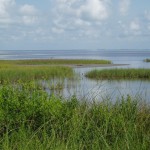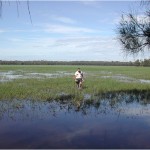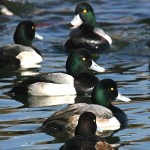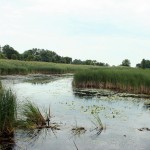Hunting waterfowl such as ducks and geese can be exciting and is an important part of wildlife population management, but providing adequate habitat should be of primary importance to any hunter or landowner. Providing habitat for ducks and geese varies from property to property, but active wetland management is the cornerstone to meeting the needs of migrating waterfowl populations.
Of all the wetland types out there, coastal wetlands are arguably some of the most important. These wetlands played a critical role historically because the millions of farm ponds and lakes that ducks and geese now use for wintering did not exist. Persons owning or leasing coastal wetlands can implement management practices that benefit local and migrating waterfowl and improve overall duck and goose hunting.
First, if necessary, landowners should install water control structures to manipulate water or control salt water intrusion. And where needed, construct small embankments or dikes to hold water on natural marshes. When carried out properly, these structures will allow you better manage the wetland habitat through water level control, even on seasonal wetlands such as flooded farmland. If you have any questions or need additional technical assistance, make sure to contact a local state or federal wildlife biologist. Often times, these agencies can identify feasible projects and even help cost-share the work.
Following water control, cattle grazing and prescribed burning are the two most beneficial wetland management practices a landowner can undertake. Cattle grazing can be used to control unwanted plants such as giant cutgrass and maidencane. However, be sure to carefully monitor grazing to encourage the growth of quality waterfowl food plants. Burning or mowing dense vegetation in the fall to increase open water areas in years when environmental conditions allow. Make sure to follow burning regulations in your county and state.
In addition, poor waterfowl food plants such as cutgrass or cattails can be plowed or disked out if the marsh dries up enough to allow equipment use. This will provide better duck habitat in the short term, but these nuisance plants will return naturally on their own over time.
Lastly, consider planting some areas adjacent the marshes into wheat or ryegrass in the fall for wintering geese. This practice will provide additional food for geese and often times ducks will move in to pick up what the geese have left, particularly if portions of the field have standing water.
In closing, enhancing habitat for ducks and geese along coastal marshes can be done through proper wetland management. Habitat is the key to providing for and attracting wildlife, so consider becoming active in waterfowl management to not only create better habitat, but also better wildlife viewing and hunting.



